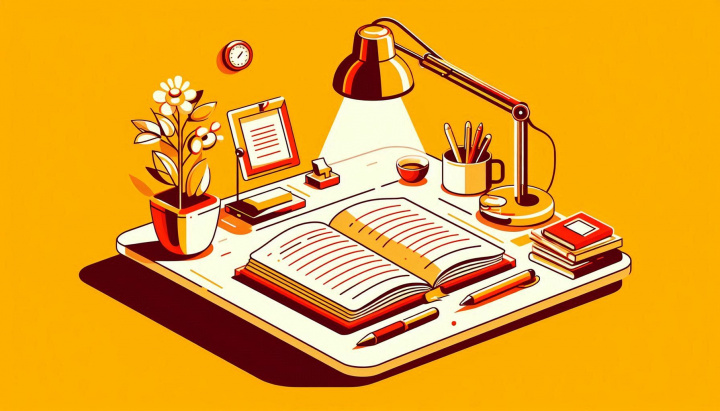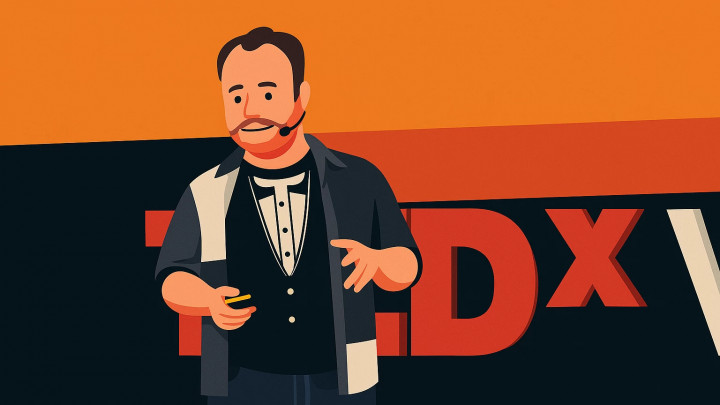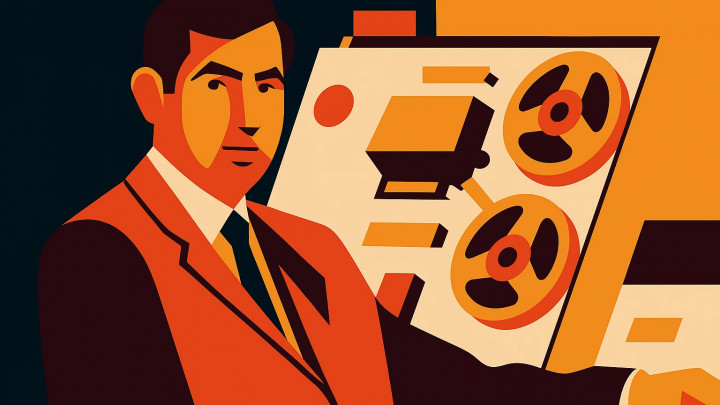Learn Vocabulary Effortlessly: The Science of the Goldlist Method
Are you familiar with the frustration of cramming a vocabulary list for hours, only to forget half of it by the next day? Vocabulary acquisition can often feel like a losing battle against forgetting. But what if there was a method that actually harnesses the natural process of forgetting, embedding words into your long-term memory without stress or pressure?

Meet the Goldlist Method, a technique developed by a polyglot that could revolutionize the way you learn. In this article, we’ll not only walk you through the steps but also dive into the science that makes it work—and reveal how you can supercharge it with Vocafy.
The Core Idea: Patience and Passive Absorption
The Goldlist Method was created by David James to take the "brute force" out of vocabulary learning. Its central principle is that our brains are far more effective at storing information long-term when they are relaxed and not under pressure. Instead of actively trying to force words into your memory (like with traditional flashcards), the Goldlist Method champions a form of passive absorption.
You simply write down the vocabulary and then let your brain do the background work. There are no quizzes, no tests, and no performance anxiety. The goal isn't lightning-fast, short-term memorization, but the slow, steady, and durable integration of words into your memory.
How It Works in Practice: The 4-Step Process
The method traditionally uses a simple notebook, but as we'll see, Vocafy's digital collections can make it even more powerful.
Step 1: Create Your "Headlist"
Take the left-hand page of a notebook (or open a new collection in Vocafy) and write down a list of 20-25 new words or phrases. Each entry should include:
- The word/phrase in your target language.
- Its English translation.
- (Optional but highly recommended) A short example sentence to provide context.
Example (Spanish):
- la cuchara – the spoon – Necesito una cuchara para la sopa.
- aprender – to learn – Quiero aprender español con Vocafy.
...and so on, up to 20-25 items.
Vocafy Tip: Not sure which words to start with? Use Vocafy's frequency dictionaries. This ensures you begin with the most common and useful words in the language, maximizing the impact of your study time.
Step 2: The Resting Period (The Magic of Forgetting)
Once your list is complete, close the notebook (or the Vocafy collection) and don't look at it for at least 14 days. This is the most crucial and unusual step. The purpose of this break is to allow your brain's natural forgetting curve to clear the information from your short-term memory. Whatever remains after this period is already on its way to your long-term storage.
Step 3: The "Distillation"
After two weeks, reopen your list. Cover the English translations and slowly read through the foreign words. Without any pressure, see which ones you recall instantly. Typically, you’ll remember about 30% of the list.
Now for the "distillation":
- The words you did not remember are written onto a new list on another page. This becomes your first "distilled" list.
- The words you did remember have graduated! You're done with them; they are now part of your working vocabulary.
Step 4: Repeat and Create New Lists
The process continues in a cycle:
- You let your new, distilled list rest for 14 days, then test and distill it again, creating a second, even smaller distilled list from the forgotten words.
- Meanwhile, you can start new "Headlists" with fresh vocabulary at any time.
Over time, you'll have several lists at different stages, ensuring a continuous but comfortable learning pace.
The Science: Why It Actually Works
The original method talks about a "relaxed brain," but we can be more specific about the cognitive science at play.
- Long-Term vs. Short-Term Memory: Cramming overloads your short-term (or "working") memory, which has a limited capacity and is designed to forget. The Goldlist Method, with its long breaks (a form of spaced repetition), facilitates the transfer of information to your long-term memory—a slower but far more durable process.
- The Power of Forgetting (Desirable Difficulty): A key concept in modern memory research is "desirable difficulty." This principle states that the more effortful it is to retrieve a memory (up to a point), the more that retrieval strengthens the memory itself. The 14-day gap does exactly this: it forces your brain to work a little harder to recall the information, cementing it more firmly than if you had reviewed it daily.
- Deeper Encoding and Context: The physical act of writing (or typing and finding an example sentence) is a deeper encoding process than passively reading a word. When you add context via an example sentence, you create more neural pathways to that word, making it easier to retrieve later.
Vocafy Tip: A key limitation of the paper-based Goldlist Method is the lack of pronunciation practice. Vocafy bridges this gap perfectly. When you create your digital Goldlist collection, you don't just write the words and sentences—you can listen to them with Vocafy's crystal-clear, native-level audio. This adds a crucial auditory layer to the visual (writing) and contextual (sentence) encoding, dramatically boosting retention and bringing the words to life.
Goldlist Method + Vocafy: The Perfect Match
While the method was born on paper, Vocafy transforms it into a powerful 21st-century tool.
- Flexibility and Portability: Your collections are always with you on your phone or computer. You can create a new list or perform a distillation anytime, anywhere.
- Perfect Pronunciation: As mentioned, mastering pronunciation is key. With Vocafy, every word and sentence is audible, helping you learn the correct sound from day one.
- Efficient Word Selection: Stop wasting time on obscure words. Vocafy’s frequency lists guarantee your effort is spent on the vocabulary that matters most.
- Effortless Organization: No more messy or lost notebooks. In Vocafy, you can easily label your collections ("Spanish Headlist 1," "Spanish 1st Distillation") to keep your learning system clean and transparent.
Criticisms and Considerations
The Goldlist Method isn't for everyone or every situation.
- It's slow: If you have a language exam next week, this isn't your method. The Goldlist is a marathon, not a sprint.
- It requires discipline: While the learning itself is stress-free, sticking to the system (the 14-day breaks, creating new lists) requires consistency.
- It builds passive knowledge first: The method excels at developing your passive vocabulary (your ability to recognize words). You will still need other forms of practice to build your active skills (speaking and writing).
Conclusion
The Goldlist Method is a brilliant alternative for anyone tired of traditional cramming. It builds on patience and the brain's natural learning principles, turning vocabulary building into an enjoyable, almost meditative process.
While powerful on its own, it becomes a true superpower when combined with Vocafy's features. The frequency lists, perfect pronunciation, and digital flexibility unlock the method's full potential. It won't replace a comprehensive language learning program, but for laying a rock-solid vocabulary foundation, it's one of the most effective and pleasant tools available.
Ready to transform your vocabulary learning? Create your first Goldlist collection in Vocafy today and experience the power of stress-free learning!





